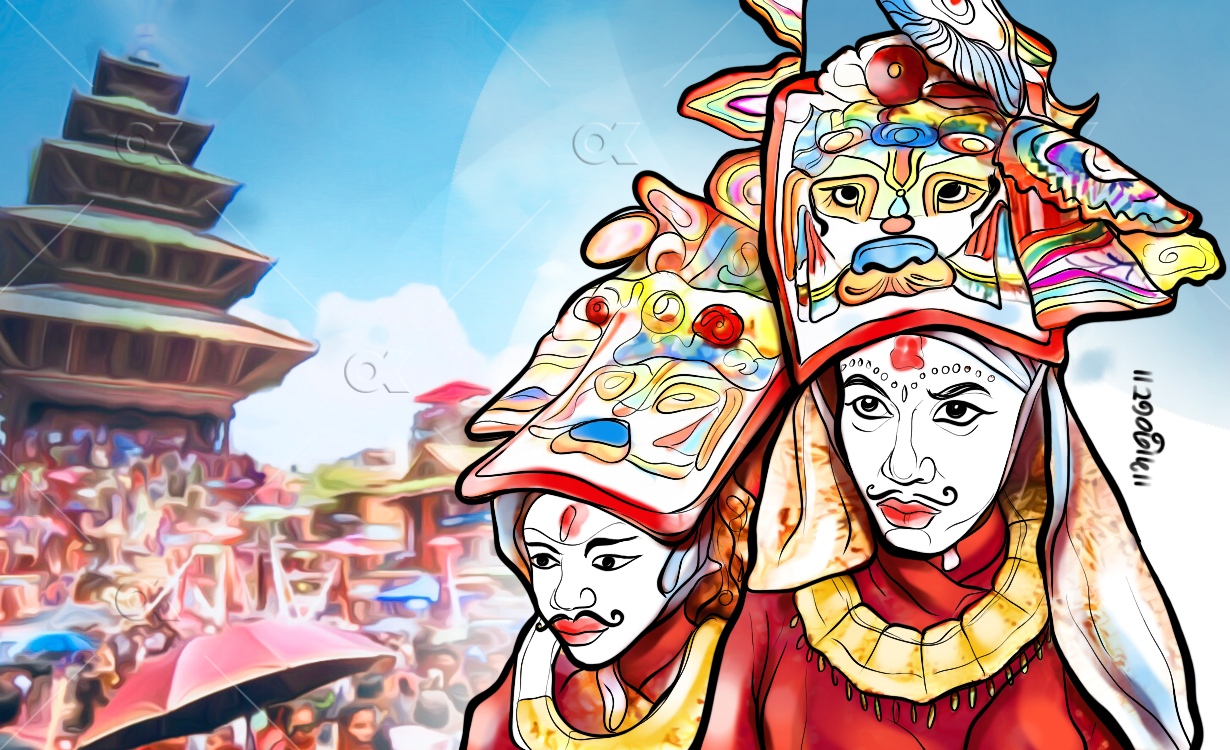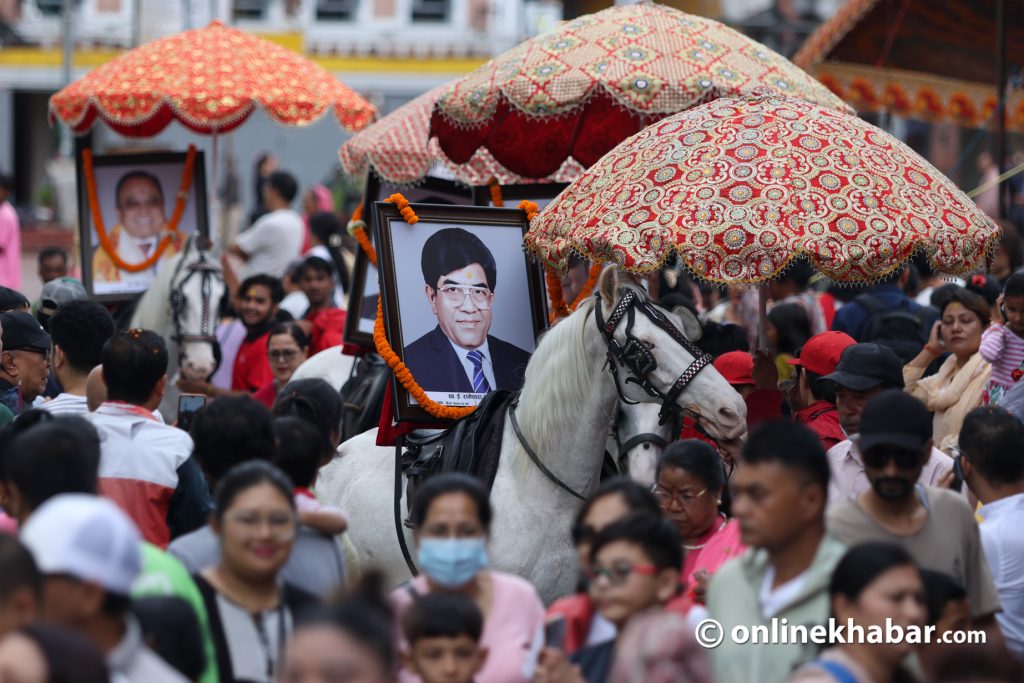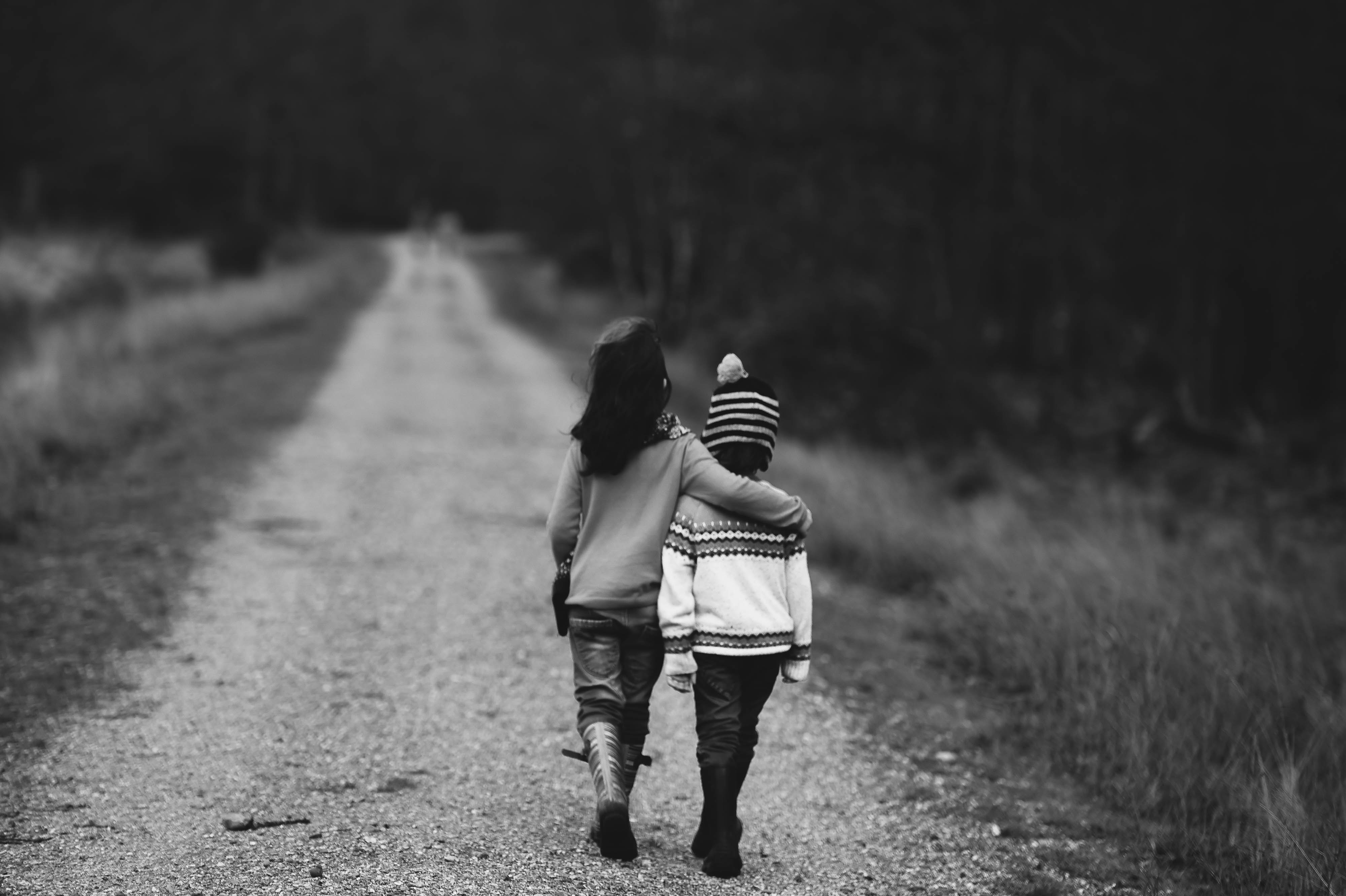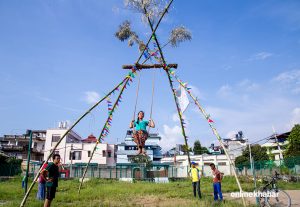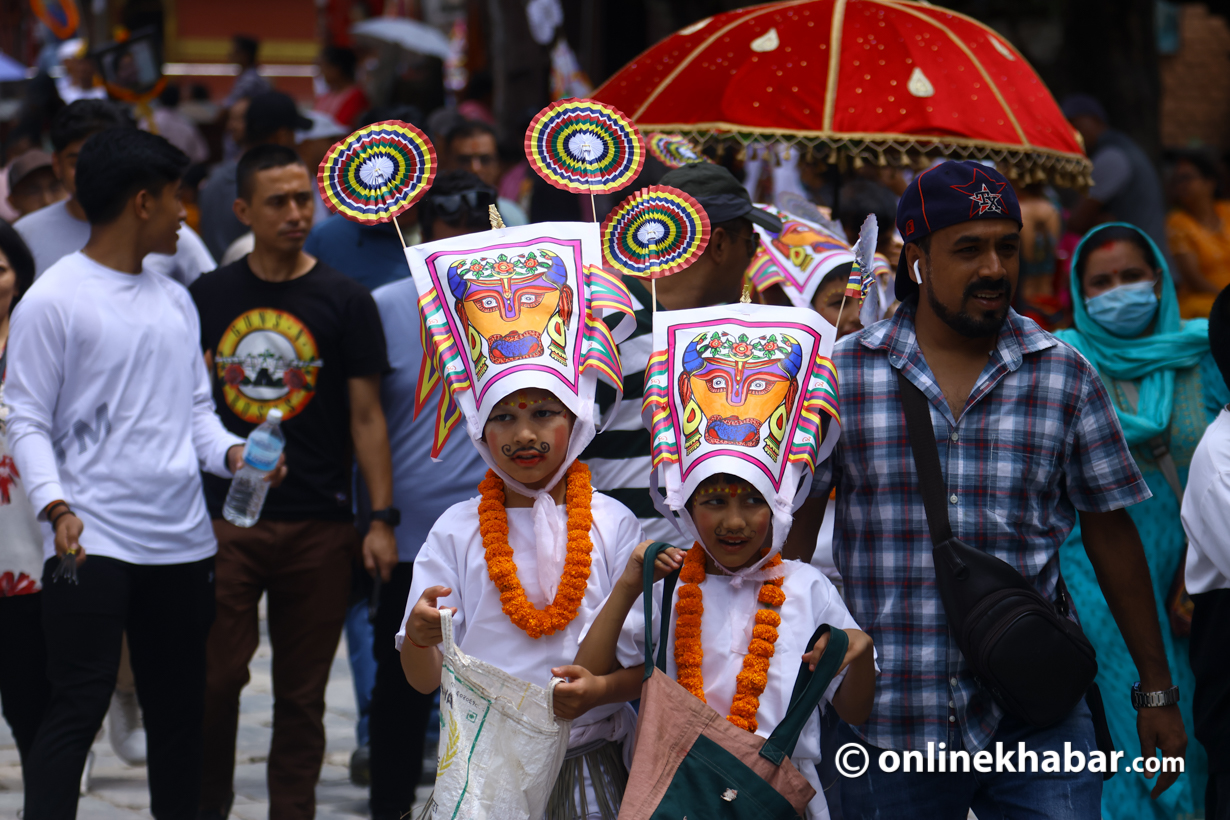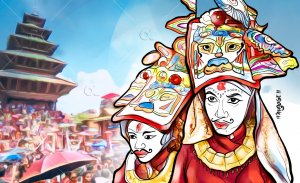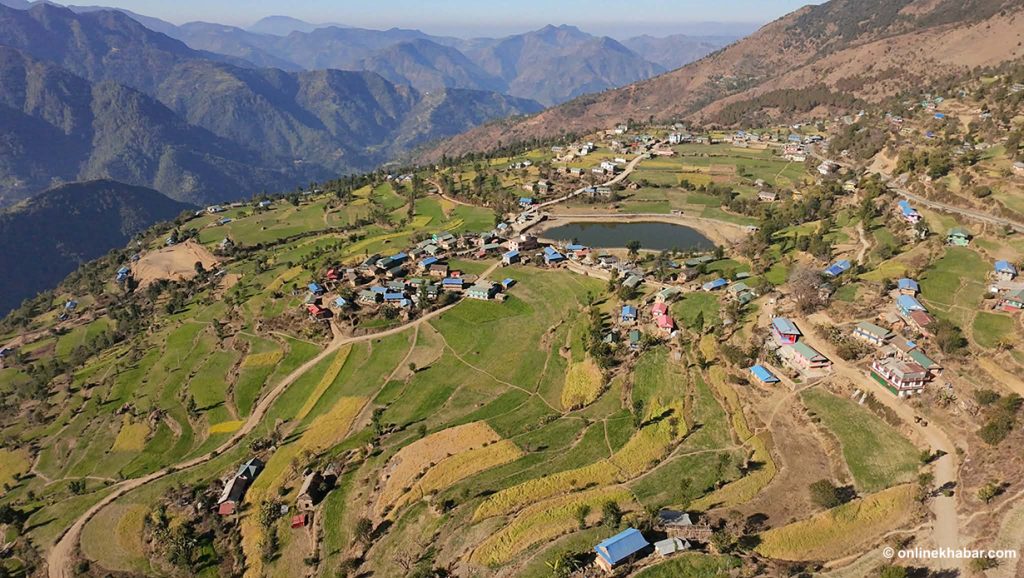In 1995, cultural expert Purushottam Lochan Shrestha was one among the many people who took out a cow around the city. It was in memory of his late father and the day was Gai Jatra (also spelt as Gaijatra).
According to Shrestha, the traditions of Gai Jatra have changed in the Kathmandu Valley in the past three decades. He observes the practice of celebrating the festival with a child dressed as a cow or cow-like structure made from bamboo as a symbol has increased. But, to retain the original culture of Gai Jatra, he remembers people of his neighbourhood in Bhaktapur used to bring the cow from Duwakot.
“Gai Jatra is now being (mis)understood as a festival in which people parade cow-like structures or wear costumes in the name of a deceased relative. But, it is not just that,” says Shrestha.
So, what is it anyway?
The 600-year-old history
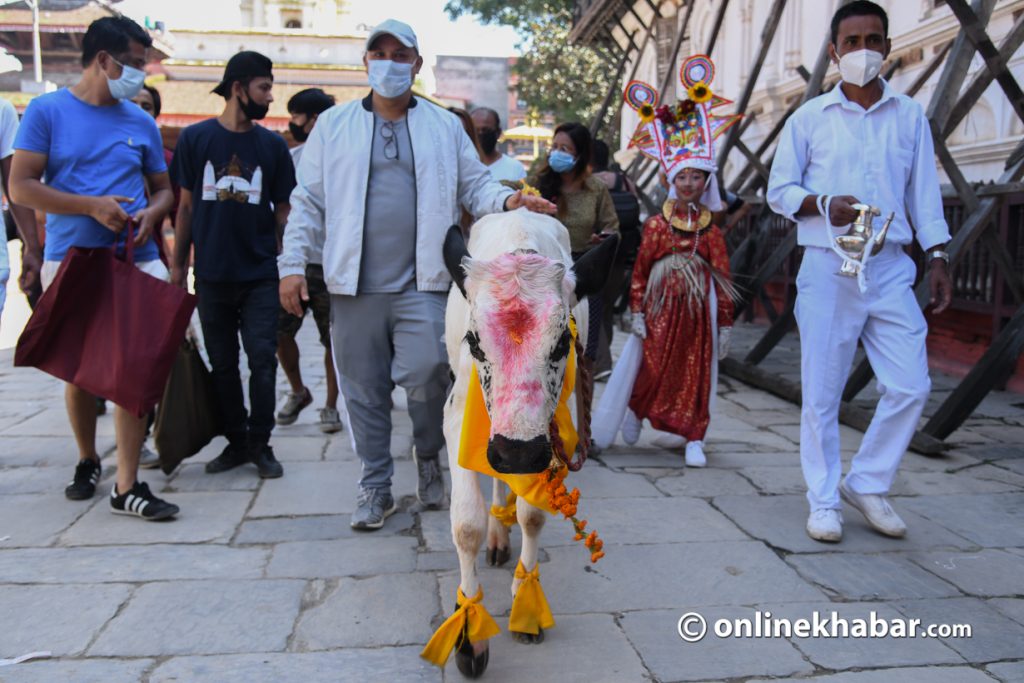
This festival is called ‘saaparu’ in Nepal Bhasa. It is said to have been introduced by King Pratap Malla to console his bereaved queen, who lost her son, by asking those who lost family members in a year’s time to parade to the palace.
But, scholars say that the Gai Jatra festival started even before Pratap Malla’s reign. The scholars argue the festival is at least 600 years ago as there is no mention in Gopal Rajbansawali or any manuscript or inscription, prior to that. And here, cultural experts Shrestha and Om Dhaubhadel think that this shows Gai Jatra started even before the said time.
Cultural experts consider Gai Jatra to be a festival that is an amalgamation of mourning and celebration. Shrestha says it symbolises that Nepali culture is there in both grief and laughter.
The changes
While Gai Jatra must have begun earlier, Shrestha says Pratap Malla introduced humour to the festival in the medieval period as the queen was still not consoled by the message of the parade that death is a universal truth.
During the Shah monarchy, another change took place in this festival.
After the death of Rani Kantivati, Rana Bahadur Shah had ordered to get all the children out of the three cities from Nepal Mandala so that the children also avoid death due to kala-azar. Then, the families moved to Banepa, Panauti and Pokhara among other places and, thereafter, Gai Jatra was celebrated outside the valley too.

Hence, the song gave rise to the song ‘Kachi macha vai yaa kegu ya yakhu’ meaning “what a cruel king to throw away even a newborn baby”.
Time for mourning or a festival?
In an ancient manuscript, there is the mention of the festival as ‘saa yaa(t)’ or ‘gai yatra’ that means ‘journey of the cow’. It was during the time of Jayasthiti Malla, around 600 years ago.
But, it was during the reign of Pratap Malla in Kathmandu, Jagat Prakash Malla in Bhaktapur and Siddhi Narsingh Malla in Lalitpur that the Gai Yatra turned into a pilgrimage and a festival, with musical instruments, which was the start of Gai Jatra we see today in Kathmandu.
Earlier, the funeral rites were completed after people roamed the city with a cow, then musical instruments were also added. And, this festival shifted from being a ‘yatra’ to ‘jatra’ in the medieval period.
Bhaktapur was the capital of Nepal for 367 years from the reign of King Ananda Dev to Yaksha Malla. After the time of Yaksha Malla, the Kathmandu valley was divided into Kathmandu, Bhaktapur and Lalitpur with differences in language and culture, which one can observe even today.
Shrestha explains it is customary to exhibit songs, plays, khyals, etc at dabalis and toles of Bhaktapur, starting from Gai Jatra to Krishna Janmashtami. Jagat Prakash Malla, the fifth generation king after Yaksha Malla, added dancing and singing at the suggestion of a Brahman, Chandra Shekhar. “Since then, the procession has been celebrated with much fervour,” he says.
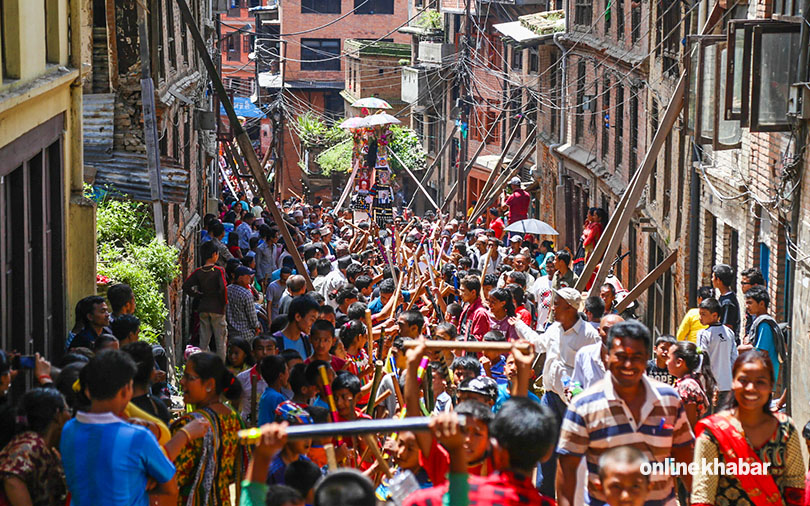
Symbolic journey of the deceased
According to Dhaubhadel, in the Garuda Purana, it is mentioned that on the 11th day of the death rites, people have to perform brishotsarga (releasing an ox/bull), with a belief if the family donates a live bull/ox and necessary land, the deceased soul will get peace.
“But, it cost a lot of money. So Gai Jatra was celebrated as an alternative on the day of Bhadra Krishna Pratipada when the deceased can cross over to heaven by grabbing the tail of a cow over the Vaitarani river,” says Dhaubhadel.
On the day of Gai Jatra, the deceased’s family decorate the house in the morning. As people started building cement houses, the focus shifted to performing purity rituals. Many make cow-like bamboo structures, either on the eve of the festival or the same morning.
At the main gate of the house, they spread red mud and cow dung. They invite a priest for shraddha karma (mourning ritual) and families perform a godaan (a ritual to donate a cow), in the name of the deceased. At this time, the women of the house are expected to go inside and cry. They have to cry while walking around the city with a cow, with an incense stick in her hand.
The appearance, however, is different. In Bhaktapur and Lalitpur, it is customary to take a symbolic cow around the city, made of four bamboos. In Kathmandu, some children are even seen walking around, disguised as Krishna-Radha and Shiva-Parvati. Inspired, such a trend is seen even in Bhaktapur too.
However, one can see profession-wise differences in this culture. Where a farmer’s family makes bamboo cows, other affluent families disguise their child(ren) as a cow in the parade.
In the past, to identify the deceased–man, woman or child–people used signs. If it was a dead child, a makeshift cow made of doko (bamboo basket) used to be seen while if the deceased was a woman, red and blue clothes were used. If the deceased woman was pregnant, a small cow (calf) would be brought along. Nowadays, a picture of the deceased is placed on a symbolic cow.




